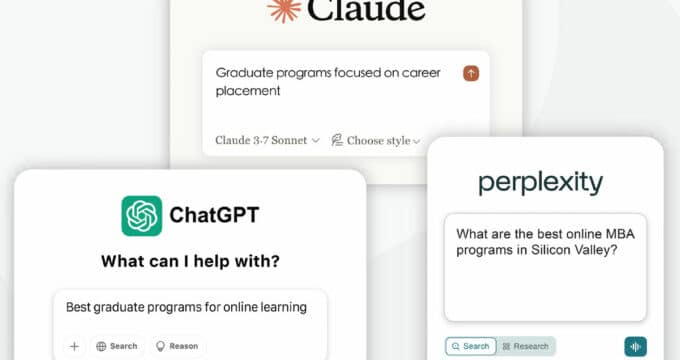The new playbook for international recruitment
- We are in a process of accelerated change for the tools and strategies we use in international student recruitment
- Even so, many essential building blocks for student recruitment remain as valuable as ever, not least of which are the relationships among partners that underpin our work together
The following feature is excerpted from the 2022 edition of ICEF Insights magazine and is reprinted here with permission. The entire issue of the magazine is available to download for free at icef.com/insights.
The pandemic was a shock, in every sense, to the status quo, and it caused a historic disruption in global patterns of student mobility. In the wake of COVID-19, many institutions, agents, and other stakeholders in our industry are re-evaluating how they recruit international students.
They are taking advantage of lessons learned, and new practices adopted, over the past couple of years. Stakeholders are also aware that other events are affecting student flows, from war and geopolitical tensions to inflationary pressures on families’ finances. And they realise that the factors influencing students’ decision-making about study abroad are fundamentally different to what they were before the pandemic.
Here’s a look at the new shape of international student recruitment in the 2020s.
The race to diversify

Whatever else it was, the pandemic was a wake-up call for educators that hadn’t yet built comprehensive risk management strategies into their recruiting approach. If COVID-19 can happen, anything can happen. A country could be devastated by climate change (e.g., Pakistan and Bangladesh this year). It could be rocked by a currency devaluation or other economic tremors. Or it could close its borders suddenly and indefinitely. The list goes on and on.
The new status quo is living with greater uncertainty – expecting the unexpected. Risk management is at the top of the list of institutional priorities now. Educators are, for example:
- Entering new student markets or intensifying their presence in existing source markets outside of China and India;
- Developing more online courses and content delivery capabilities;
- Investing in offshore campuses or joint programmes with foreign partners.
The goals are to stretch enrolments further across nationalities and beyond in-person classes, and to enrol international students who may be content to study remotely in their home country.
Greater reliance on agents
Educators that had strong agent partnerships in place during the worst months of the pandemic benefitted on several fronts:
- When border restrictions prevented travel overseas, they had partners in local markets who could keep working with students whose plans had been upended by the crisis;
- They were able to maintain a brand presence in key markets beyond digital channels;
- They gained a competitive advantage through up-to-the-minute market intelligence from agents.
As a result, the perceived value of agents rose across our industry, and – especially given the rush to diversify source markets – the use of agents is increasing.

In tandem with rising interest in the agent channel, there has also been a push to develop best practice guidelines aimed at helping educators and agents work optimally together. The guidelines emphasise mutual responsibility and respect and provide a good basis for successful relationships.
For a growing number of institutions, professional, high-performing agents are now powerful partners in a multichannel recruitment strategy. Jun Wang, assistant provost for strategic initiatives and international recruitment, University of California, Riverside, explained in a Chronicle of Higher Education webinar in early 2022 that:
“Before, we were strictly recruiting from China or India (a little bit), but now we’re recruiting from 42 countries. We started thinking – what if we can’t travel, what if there is no virtual access, and to [manage this much recruitment] at 3 a.m. every day [because of time zones] … it’s not healthy for us. So, we have started to pay in-country representatives. They’re in the same time zone [as students] and they know the language and culture so much better – they can build long-lasting connections.”
A bigger role for in-country offices
More institutions are setting up in-country offices in key sending markets to establish a stronger local presence and sustained promotion throughout the year. These may be standalone facilities for individual institutions or shared offices operated by consortia or by third-party providers, such as Illume Student Advisory Services, Grok Global, EduConnect International, and INTO University Partnerships.
In-country office representatives can help institutions engage with agents and schools, and develop a more robust and continuous presence in-market, including at student- or parent-facing events. In the simplest terms, in-country reps can be thought of as an overseas extension of a university’s international marketing team.
Having in-country offices is more affordable than sending institutional staff abroad several times a year. What’s more, even if a university staff member could travel, say, four weeks a year to one source market, that would leave another 48 weeks when they weren’t in that market to connect with parents, schools, agents, and students.
Particularly for the many institutions that have increased the number of international markets they’re working in, using in-country representatives makes sense. Otherwise, managing recruitment in many countries and time zones could be exhausting, if not impossible.
New messaging
There’s no doubt about it: the new generation of students is pragmatic, astute, sceptical, and understandably anxious about the future. They have seen their lives interrupted, their mental health compromised, and their ability to experience a full, vibrant, in-person social life and education taken away for months – or longer. Some have seen their families’ finances fall apart or their countries’ economies go into freefall. Because they lost control of so much during the pandemic, today’s students are highly interested in regaining as much control as possible.
They gather “proof” on which to base their study abroad decisions like no students before them. They want to talk to current students, alumni, and faculty. They look for evidence on institutional websites that graduating from a programme will lead to a successful job – not in months or years, but right away. They search endlessly on social media such as TikTok for student influencers to assure them they will fit in on campus.

Students are also seeing institutions competing harder for their enrolments. This is true not just in China and India, but in the emerging markets educators are flocking to in the push for diversification. Many students need affordable options and will only consider universities offering scholarships – and more and more institutions are increasing the number of scholarships they provide, knowing it may be the competitive edge they need.
All these changes are resulting in new marketing messaging, investments, channels, and strategies. A well-designed institutional website that quickly, persuasively answers students’ questions is essential. Some institutions are using chatbots to respond almost instantly to students – knowing that students now expect near-immediate answers to their questions. Student ambassador programmes are now common, and paid student social media ambassadors are a rising trend, as institutions strive to deliver personalised, authentic messaging.
Suffice to say, achieving a balance between efficiency and personalisation in communications to students is a challenge many institutions now face.
All things digital
We all went digital in the pandemic – what else could we do? For schools and universities, going digital in marketing was one of the few ways to keep communicating with students. For students, Internet research and social media interactions were a necessary way to decide whether an institution was the right fit. Students attended online rather than in-person events put on by schools, and they “walked” around campus via virtual tours.
Those habits are now ingrained. There is no debate about how important digital marketing now is in recruitment; everyone is invested in it. But questions remain: How can you optimise this channel? Is your virtual tour rich enough? Are you letting students tell enough of your brand story? Are you only broadcasting messages – or are you taking advantage of the opportunity to interact with students? If you are recruiting in Brazil, for example, do you have Portuguese-language information on the website, or Brazilian student ambassadors?
Digital marketing became a must in the pandemic. Going forward, it will be a given.
Recruiting at scale
A range of educational technologies are now available to help institutions reach as many students as possible without overtaxing admissions and marketing staff. Edtech has its place, especially given how powerful the technologies are. But they are best used to complement the talent and personalised touch of experienced employees. For example, chatbots can help to respond quickly to students – but students would be annoyed if they couldn’t speak directly to admissions staff once their questions became more complex or personal.
Multidimensional marketing
You may notice one overarching theme in this article: recruiting today is about establishing a network of complementary channels – and partners. The challenge of diversification is great enough that very few schools or universities can manage international recruiting using only their own staff and resources.
The push for diversification is driving the rise in the use of agents and in-country offices. It’s also prompting more and more schools to rely on student ambassadors from key markets to speak to prospective students at home – in their own language, on the social channels their peers are on.
With more on their plates than ever, institutional staff are using AI chatbots to help manage massive volumes of enquiries from around the world. Staff are turning to virtual tour companies and to experienced web designers to create the sophisticated digital branding that students now expect.
Trusted partnerships have always been valuable, but never more so than now.
For additional background, please see:
















